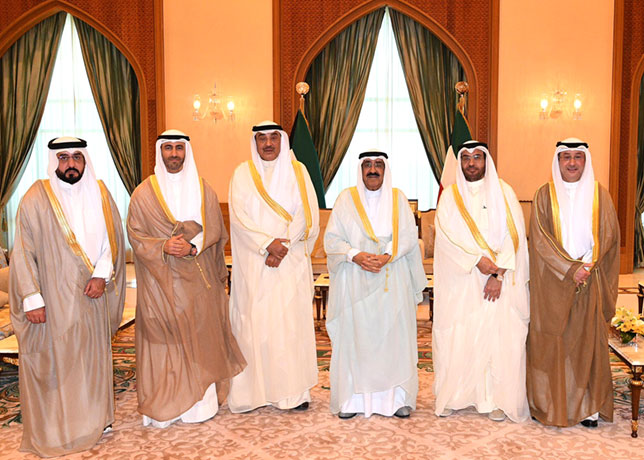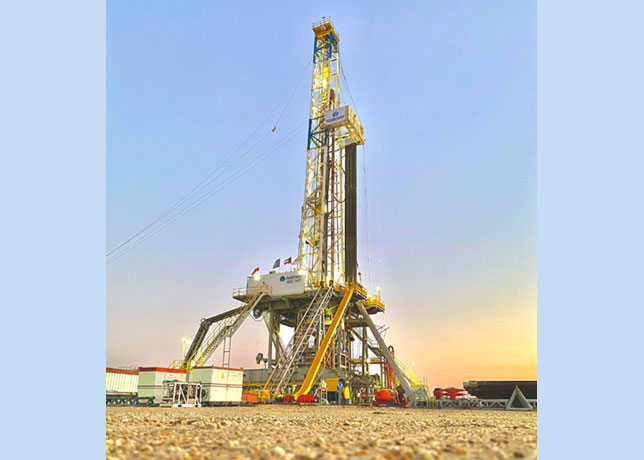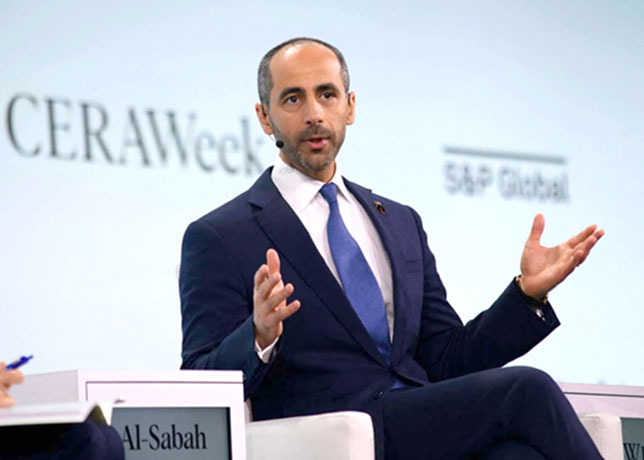
 His Highness the Amir, in the presence of His Highness the Crown Prince, receives oil industry officials
His Highness the Amir, in the presence of His Highness the Crown Prince, receives oil industry officials
The offshore Al-Nokhatha field, located east of Kuwait's Failaka Island, spans 96 sq km and preliminary estimates suggest the hydrocarbon reserves at this well to be about 2.1 billion barrels of light oil and 5.1 trillion standard cubic feet of gas, equal to 3.2 billion barrels of oil equivalent
In a significant boost to Kuwait’s offshore oil exploration ambitions, the Kuwait Oil Company (KOC), a subsidiary of Kuwait Petroleum Company (KPC), announced the discovery of substantial commercial quantities of light oil and associated gas in the offshore Al-Nokhatha field in July. This field is located east of Kuwait's Failaka Island.
According to a KOC statement published by the Kuwait News Agency (KUNA), the Al-Nokhatha field spans approximately 96 square kilometers, marking a major breakthrough in Kuwait's efforts to tap into its offshore hydrocarbon resources. This discovery aligns with Kuwait’s broader strategy to diversify its oil production capabilities and increase its hydrocarbon reserves, enhancing the nation’s energy security and economic stability.
Following the important announcement, His Highness the Amir Sheikh Mishal Al-Ahmad Al-Jaber Al-Sabah, in the presence of His Highness the Crown Prince Sheikh Sabah Al-Khaled Al-Hamad Al-Sabah, received the Minister of Finance, the Minister of State for Economic Affairs and Investment and the Acting Minister of Oil, Dr Anwar Ali Al-Mudhaf; the CEO of KPC, Sheikh Nawaf Saud Al-Nasser Al-Sabah; the CEO of the KOC, Ahmed Jaber Al-Eidan; and the Executive Vice President of Exploration and Drilling at KOC, Khaled Muhammad Al-Mulla.
His Highness Sheikh Ahmed Al-Abdullah Al-Ahmad Al-Sabah, Prime Minister, also received members of the oil delegation.
The daily production from Al-Nokhatha well is around 2,800 barrels of light oil and 7 million cubic metres of associated gas, KOC explained.
Preliminary estimates suggest the hydrocarbon reserves at this well to be about 2.1 billion barrels of light oil and 5.1 trillion standard cubic feet of gas, equal to approximately 3.2 billion barrels of oil equivalent, it said.
These initial findings indicate huge potential to further enhance and increase hydrocarbon resource quantities in various layers and reservoirs within the discovered field, KOC added.
The launch of the current marine exploration project was based on two-dimensional seismic surveys of the area, along with geophysical and geological studies to understand the earth's layers and compositions, identify and secure the best drilling sites, and prepare for logistical operations, KOC mentioned.
KOC revealed that the marine area, representing about one-third of Kuwait's total land area and covering more than 6,000 sq km, in the first phase includes drilling six exploratory wells for oil and gas, with subsequent stages to be determined based on the drilling results.
KOC underscored the importance of the offshore exploration project as a national endeavour with the goal of enhancing Kuwait's hydrocarbon reserves sustainability and meeting global demand, aiming to elevate Kuwait's status as a reliable global oil and gas producer and place it prominently on the regional map of leading offshore operators adhering to international standards.
Based on initial test results, a developmental plan will be established to commence actual production from the field at the earliest opportunity, boosting KOC's production capacity and laying another cornerstone for achieving its 2040 strategy, it indicated.











































































